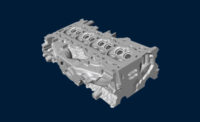
From the pursuit of AS 9100 registration to lean manufacturing, companies are continually looking for the edge that will distinguish them from the competition. For AS 9100 registration, one significant advantage that is often overlooked is the audit score.
International certification guidelines require that AS 9100 audits be scored. This score is posted in the Online Aerospace Supplier Information System (OASIS), which is used by the aerospace community, particularly OEMs, to monitor supply chain audit performance. Many OEMs have minimum thresholds in terms of AS 9100 audit scores, and will look closely at a company’s score to help assess its quality management system and ability to provide premiere products or services. The scores can be used to determine whether OEMs conduct on-site supplier assessments, or even whether contracts are awarded at all.
Organizations pursuing AS 9100 registration can increase their probability of a positive audit score by learning the factors that significantly impact it. For each AS 9100 audit there is a total score to be achieved, which is based on applicable clauses of the standard. For instance, total possible scores would be different for organizations that are responsible for design vs. those that are not.
For any nonconformances (NCRs) that are found during an audit, points are deducted from the total possible score. Key requirements, which are clauses of the AS 9100 standard that have been identified to be most critical, carry a greater point value. Thus, by paying careful attention to key requirements, an organization can receive a higher audit score by ensuring there are no NCRs in these critical areas.

Table 1 shows a requirement that includes five sub-clauses. Since the M is at the top of the clause, all five sub-clauses are considered key.
For sections of the standard where there are multiple sub-clauses, it also is important to distinguish where key requirements are identified in the clause. Where the key requirement designation is at the very top of the clause, any sub-clause below would be considered key and would result in a significant reduction in the audit score if NCRs were found here.

Table 2 shows an example where there are two product-related key requirements in lower sub-clause; in this example, only sub-clause g) and h) would have a higher impact on the audit’s total score.
Altogether there are 57 key requirements identified in AS 9101. These requirements could have a significant impact on the final outcome of an AS 9100 audit. Organizations pursuing AS 9100 registration should place additional emphasis on these focus areas to maximize the results of their audit, and subsequently their audit score. The goal of achieving AS 9100 registration is not just to get a certificate, but also to implement an effective quality system that meets industry expectations and will increase the probability of shipping good product and enhancing customer satisfaction.

Table 3 illustrates a breakdown by section where the key requirements are located. Due to the magnitude of key requirements in Sections 7 and 8, these sections have been broken down by sub section to illustrate where the majority of key requirements are.
How do these 57 key requirements impact the score of AS 9100 audits? Within AS 9101 there is a scoring table used to calculate the score of AS 9100 audits. Point values have been allocated by the aerospace industry group based on the importance of specific sub- sections. There are pre-determined point reductions for single and multiple nonconformities. If the nonconformity falls in a key requirement clause, the point reduction is greater. Table 4 illustrates an example of how drastic the point reduction can be.

Table 4: If the nonconformity falls in a key requirement clause, the point reduction is greater. This graphic illustrates an example of how drastic the point reduction can be.
Organizations seeking AS 9100 registration must realize the impact of key requirements. The score reflects the health of an organization’s quality system, and these results are available directly to customers.
Note that the key requirements are only designated in the AS 9101 checklist, not in the AS 9100 standard. Whether pursuing or maintaining AS 9100 registration, organizations should use the AS 9101 checklist to strategically understand key requirements. Ensuring adequate systems are in place will increase the probability for a maximum score during the audit.
Tec Tips
- For any nonconformances (NCRs) that are found during an audit, points are deducted from the total possible score.
- Key requirements, which are clauses of the AS 9100 standard that have been identified to be most critical, carry a greater point value.
- An organization can receive a higher audit score by ensuring there are no NCRs in key requirement areas.

